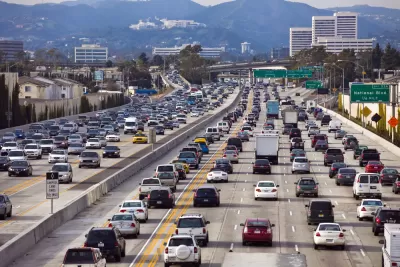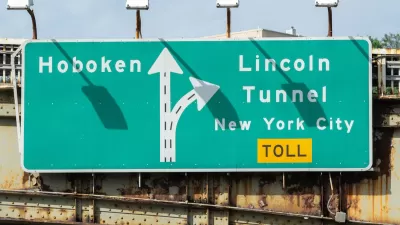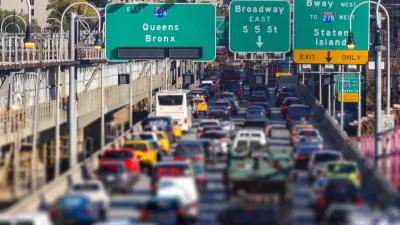On average, women spend longer in traffic than men—perhaps because of the gendered division of labor that still exists in many households.

In Pacific Standard, contributor Tristan Bridges reflects on traffic research suggesting that women make up the majority of congestion—and why.
Women may tend to leave for work closer to peak hours, but work seems not to be the driver of their time stuck in traffic.
When automobiles were first marketed for household use, they were targeted to married women, who were tasked with completing errands throughout the day while their husbands were at work.
Still today, most car trips are made for errands—and a majority of those errands are undertaken by women:
It’s a portion of the "second shift," women's disproportionate contribution to the division of labor inside the household even when they are working outside of the household as well.
Relatedly or not, women are more likely than men to combine multiple errands into one trip. (As Bridges notes, "Traffic experts call this 'trip chaining,' but the rest of us call it multi-tasking.")
FULL STORY: Contrary to Stereotypes, Women Lose More Time in Traffic Than Men

Study: Maui’s Plan to Convert Vacation Rentals to Long-Term Housing Could Cause Nearly $1 Billion Economic Loss
The plan would reduce visitor accommodation by 25,% resulting in 1,900 jobs lost.

Alabama: Trump Terminates Settlements for Black Communities Harmed By Raw Sewage
Trump deemed the landmark civil rights agreement “illegal DEI and environmental justice policy.”

Why Should We Subsidize Public Transportation?
Many public transit agencies face financial stress due to rising costs, declining fare revenue, and declining subsidies. Transit advocates must provide a strong business case for increasing public transit funding.

Paris Bike Boom Leads to Steep Drop in Air Pollution
The French city’s air quality has improved dramatically in the past 20 years, coinciding with a growth in cycling.

Why Housing Costs More to Build in California Than in Texas
Hard costs like labor and materials combined with ‘soft’ costs such as permitting make building in the San Francisco Bay Area almost three times as costly as in Texas cities.

San Diego County Sees a Rise in Urban Coyotes
San Diego County experiences a rise in urban coyotes, as sightings become prevalent throughout its urban neighbourhoods and surrounding areas.
Urban Design for Planners 1: Software Tools
This six-course series explores essential urban design concepts using open source software and equips planners with the tools they need to participate fully in the urban design process.
Planning for Universal Design
Learn the tools for implementing Universal Design in planning regulations.
Smith Gee Studio
Alamo Area Metropolitan Planning Organization
City of Santa Clarita
Institute for Housing and Urban Development Studies (IHS)
City of Grandview
Harvard GSD Executive Education
Toledo-Lucas County Plan Commissions
Salt Lake City
NYU Wagner Graduate School of Public Service





























